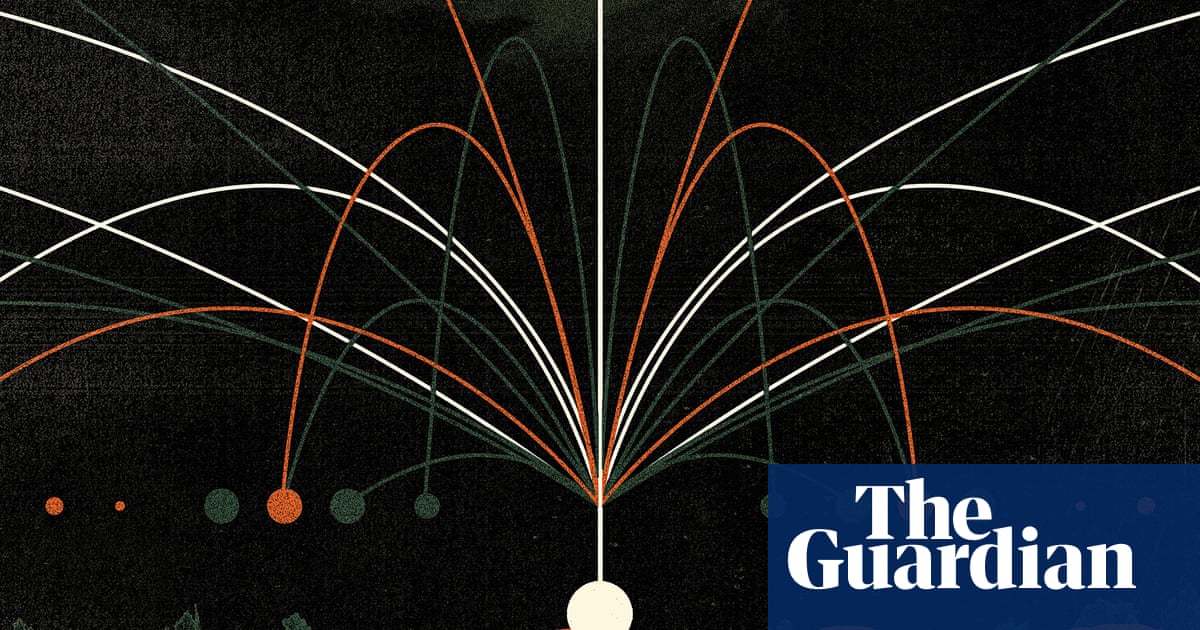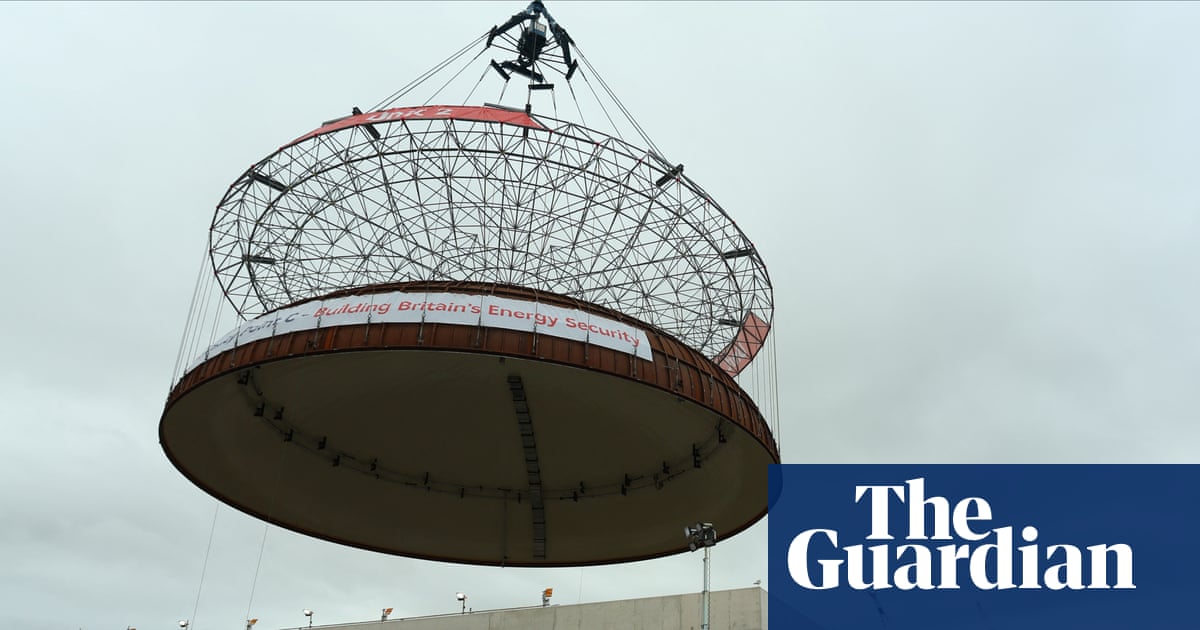A Sea of Lupines by Max Inwood
The annual lupine bloom in New Zealand is spectacular, with fields of colourful flowers stretching across the Mackenzie Basin. This region in the heart of the South Island is renowned for its dark skies, making the scene even more surreal at night. Above the flowers, you can see the band of the outer Milky Way, alongside the constellations Orion, Gemini, and the Pleiades. Joining them are the bright planets Jupiter and Mars, with a strong display of green airglow visible along the horizon
Photograph: Max Inwood/Milky Way photographer of the year
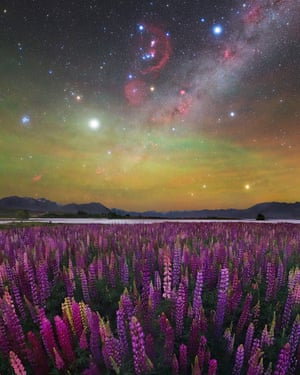
The Night Guardians by Rositsa Dimitrova
Easter Island had been on my bucket list for a long time, and it once seemed almost impossible to reach. On our first night there, the weather forecast looked promising, so we decided to go ahead with the tour our group had booked months earlier. However, Rapa Nui sits in the middle of the Pacific Ocean, where the weather is unpredictable. An hour later, we were frantically photographing the statues at Rano Raraku, when the sky suddenly began to clear. By 5am, it was completely clear, and we had less than two hours to capture all the shots we wanted.
Photograph: Rositsa Dimitrova/Milky Way photographer of the year
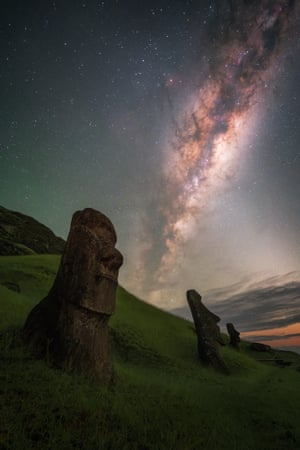
Valle de los Cactus by Pablo Ruiz
A panoramic shot of the Milky Way in a remote area of the Atacama cactus valley, known for its large concentration of cactus plants. I love this place with its countless possibilities. The panorama was taken just as the galactic centre began to rise, with the spectacular Gum Nebula visible on the right. It was an especially bright night with a breathtaking sky. The valley isn’t easy to navigate, but it’s always worth trying to find new compositions in such stunning locations beneath the night sky
Photograph: Pablo Ruiz/Milky Way photographer of the year
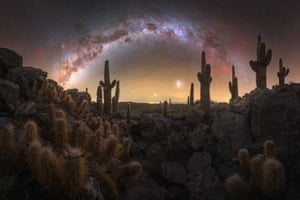
Boot Arch Perseids by Mike Abramyan
The Perseid meteor shower occurs every August. In 2024, I had planned to photograph it from the Canadian Rockies, but wildfires forced me to change my plans. I found a safe haven in the Eastern Sierra Nevada. Sitting on the rock is my friend Arne, gazing up at the magnificent core of our galaxy. Each meteor is painstakingly aligned to its true location in the night sky. The final depiction shows all the meteors I captured, combined into one frame – as if the Earth hadn’t been rotating and all the meteors had fallen at once
Photograph: Mike Abramyan/Milky Way photographer of the year
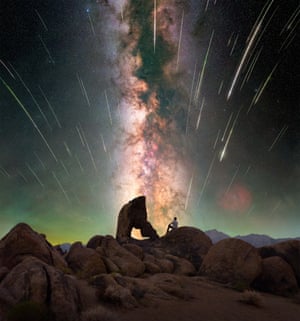
Double Milky Way Arch Over Matterhorn by Angel Fux
This image captures the rare double arch Milky Way, where both the winter Milky Way (with Orion rising) and the summer Milky Way (with the galactic centre) appear in the same night – a seamless transition between seasons. Taken at 3,200 metres, in the heart of winter, the night was brutally cold, testing both my endurance and equipment. This is a time blend, preserving the real positions of both arches by combining frames taken hours apart, with the foreground captured at dawn for the best detail
Photograph: Angel Fux/Milky Way photographer of the year
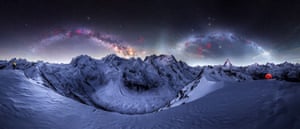
Winter Fairy Tale by Uroš Fink
Undoubtedly my wildest location this winter: Austria’s Dobratsch mountain. After a two-hour hike through the snow with a 22kg backpack and sled, the stunning views kept me energised. I spent the evening exploring compositions, and this is my favourite: a panorama of the winter Milky Way with reddish nebulae, stretching above Dobratsch. The sky was magnificent, with Jupiter and Mars shining brightly. In the foreground is the cabin, where I spent three freezing hours, waiting for the perfect shot of the Milky Way’s core
Photograph: Uroš Fink/Milky Way photographer of the year

Blossom by Ethan Su
After three years of waiting, the Yushan alpine rhododendrons are finally in bloom once again on Taiwan’s 3,000-metre-high Hehuan mountain. On this special night, distant clouds helped block city light pollution, revealing an exceptionally clear view of the Milky Way. A solar flare from active region AR3664 reached Earth that evening, intensifying the airglow and adding an otherworldly touch to the sky. Together, these rare natural events created a breathtaking scene – vivid blooms glowing softly beneath a star-filled sky
Photograph: Ethan Su/Milky Way photographer of the year

Diamond Beach Emerald Sky by Brent Martin
With a clear night forecast and the Milky Way core returning for 2025, I set out to explore the Great Ocean Road. After a few setbacks – such as getting the car stuck on a sandy track – I almost gave up. However, I pushed on and found a great spot above the beach to capture the scene. The night was full of colour, with comet C/2024 G3 Atlas and a pink aurora in the early hours, followed by the Milky Way rising amid intense green airglow. Despite the challenges, the reward of this stunning image and the memory of the view made it all worthwhile
Photograph: Brent Martin/Milky Way photographer of the year
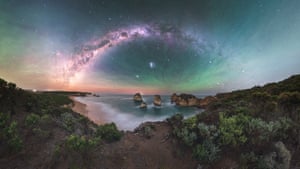
Bottle Tree Paradise by Benjamin Barakat
Socotra is one of my favourite places, but when it comes to a specific location, this one stands out. It doesn’t have an official name, as it’s not a destination for the few fortunate tourists who visit Socotra. After shooting there for the past four years and scouting the island, I’ve discovered hidden gems like this one, which I call Bottle Tree Paradise. Bottle trees are unique to Socotra, a result of the island’s long isolation from the mainland. This separation allowed them to evolve distinctive features, such as their bottle-shaped trunks
Photograph: Benjamin Barakat/Milky Way photographer of the year

Cosmic Fire by Sergio Montúfar
On the early morning of 2 June 2024, I summited Acatenango Volcano for the first time, hoping to witness the fiery beauty of the neighbouring Volcan de Fuego against the Milky Way’s backdrop. That night, the volcano was incredibly active. Above, the Milky Way stretched diagonally across the sky. As the volcano erupted, the ash plume rose vertically, forming an acute angle of about 45 degrees with the galaxy’s diagonal path, creating a stunning visual contrast between Earth’s fury and the cosmos’ serenity
Photograph: Sergio Montúfar/Milky Way photographer of the year
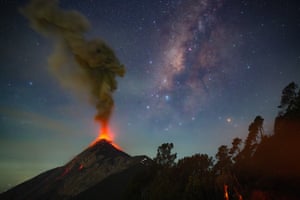
Starlit Ocean by Xingyang Cai
Capturing this image was a race against time, light and distance. With comet Tsuchinshan–Atlas (C/2023 A3) making its approach, I knew I had a rare opportunity to see it with the naked eye before it faded into the cosmos. I embarked on a five-hour round trip to McWay Falls in Big Sur. My window was narrow – just six precious minutes of true darkness before the Moon rose and washed out the night sky. But those six minutes were unforgettable. It was one of the most vivid and humbling naked-eye comet sightings I’ve ever experienced
Photograph: Xingyang Cai/Milky Way photographer of the year

Echiwile Arch by Vikas Chander
When one Googles information about visiting Chad, the results aren’t very encouraging from a safety perspective. Nevertheless, the intrepid astrophotographer in me decided to take the chance and visit this landlocked country, specifically the Ennedi Massif in the north. Sparsely populated and devoid of light pollution, the three-day drive from the capital, N’Djamena, was well worth the risks involved. The region is filled with rock formations, shapes, and arches, offering an abundance of options for foreground elements to frame the dramatic night skies
Photograph: Vikas Chander/Milky Way photographer of the year
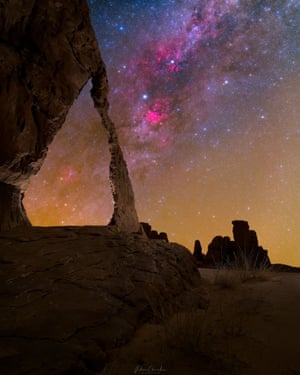
Tololo Lunar Eclipse Sky by Petr Horálek
On 14 March 2025, a total lunar eclipse occurred, especially visible over the Americas and the Pacific Ocean. I was fortunate to observe this particular eclipse from the NSF Cerro Tololo Inter-American Observatory in Chile. You can see how epic the sky was during totality, as the moon darkened enough for the majestic Milky Way, the faint belt of zodiacal light, and prominent airglow to stand out
Photograph: Petr Horálek/Milky Way photographer of the year
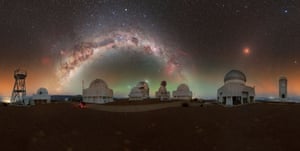
Evolution of Stars by Kavan Chay
The first image I captured from this spot in Otago, New Zealand, is the one I feel kick-started my astrophotography journey. The set of sea stacks provided a foreground subject facing the right direction, and being a local spot relatively free of light pollution, it was the perfect location to capture the Milky Way core. It felt fitting to try again with a few extra years of experience and an astro-modified camera, which allows for easier capture of hydrogen-alpha-rich regions of the sky. The years of experience made panoramic shooting and editing easier
Photograph: Kavan Chay/Milky Way photographer of the year
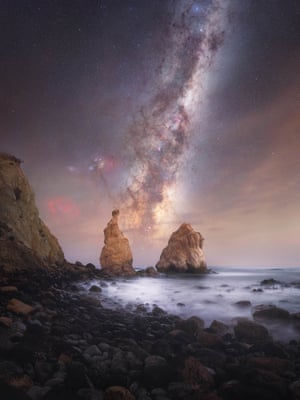
One in a Billion by Don Pettit
I float in the cupola, looking out the seven windows composing this faceted transparent jewel. While my mind is submerged in contemplation, my eyes gorge on the dim reflections from a night-time Earth. There are more than 8 billion people who call this planet home. There are seven of us who can say the same for the space station. What a privilege it is to be here. I used an orbital star tracker to take out the star streak motion from orbit
Photograph: Don Pettit/Milky Way photographer of the year
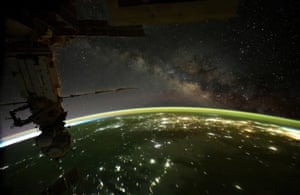

 3 months ago
114
3 months ago
114













